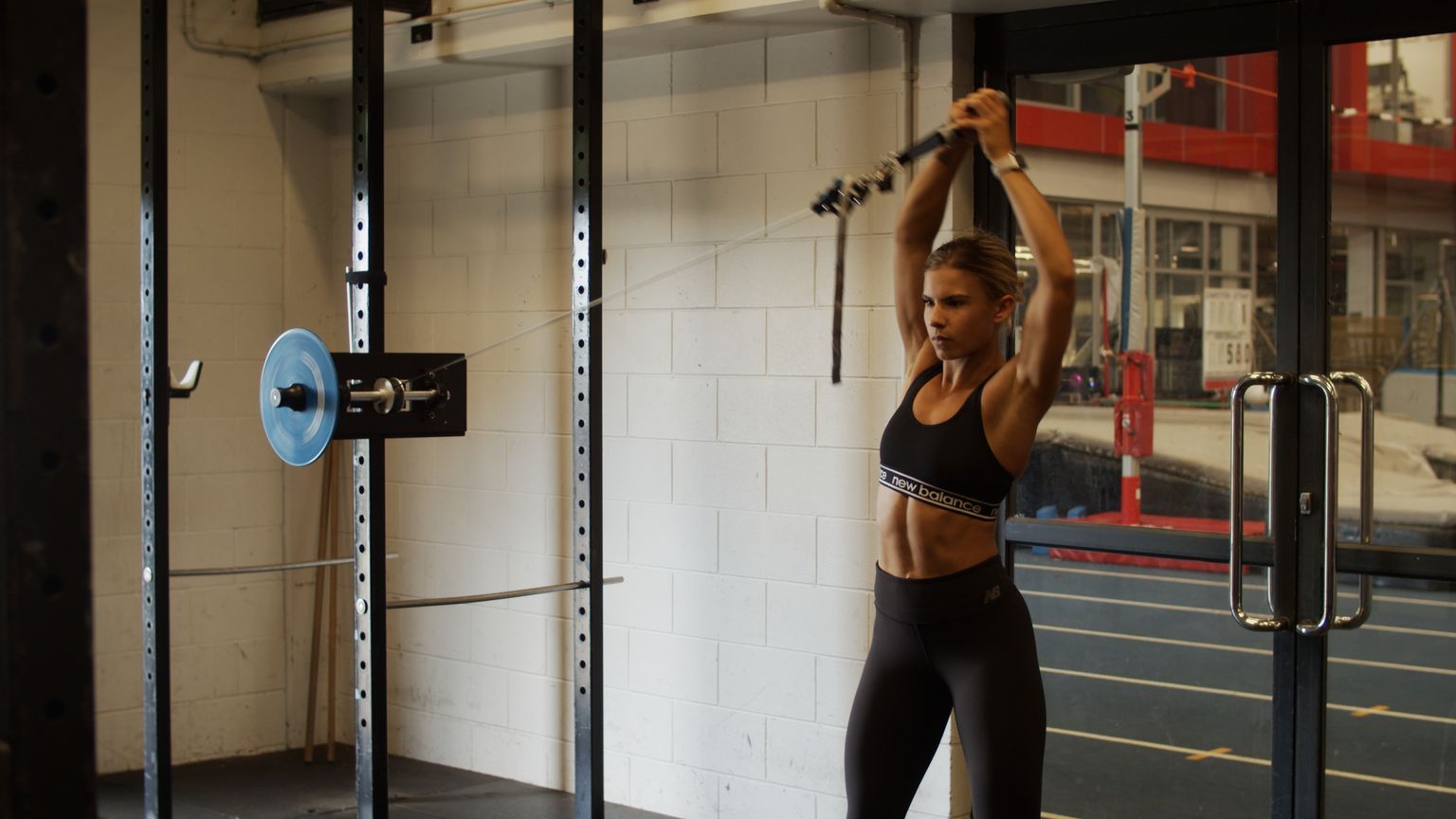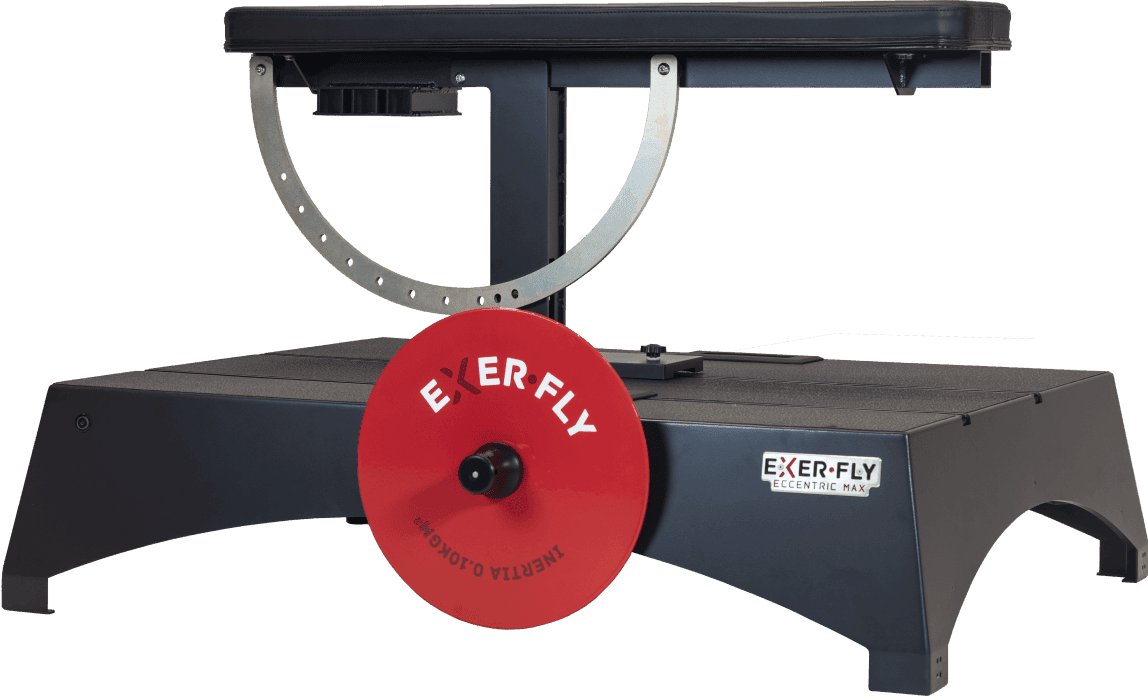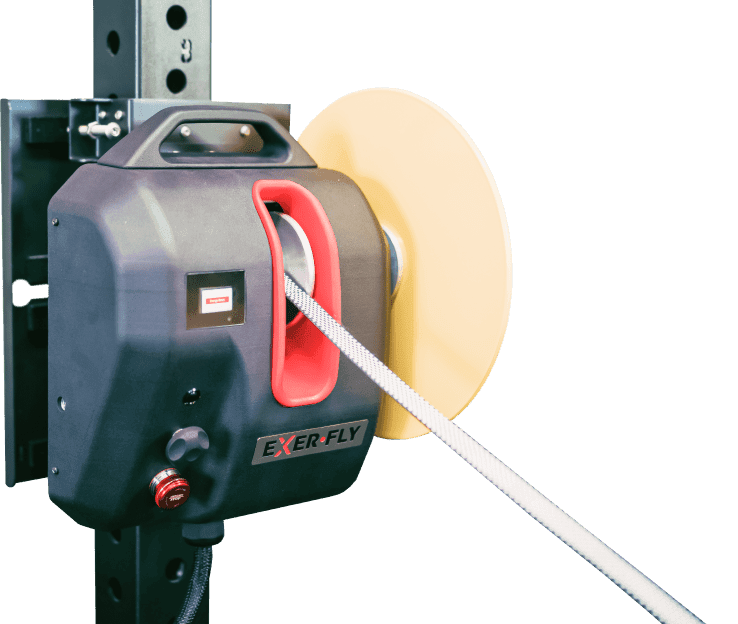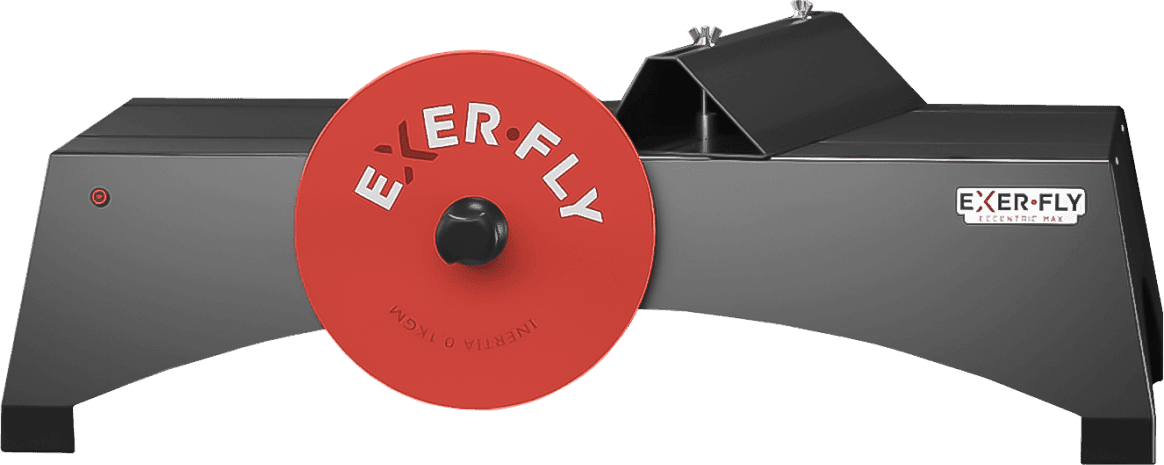
ACL Injuries and Shoulder Rehab with Exerfly
In most team sports, players are required to repeatedly perform short, explosive efforts such as accelerations and decelerations during a change of direction. Conventional strength and power training programs typically make use of weights for constant concentric and eccentric load in exercises emphasizing vertical actions, but they rarely encompass horizontal/lateral actions offering eccentric overload. Additionally, since strain injuries occur when muscle and tendon fibres cannot maintain the tension placed upon them and are disrupted, the absence of eccentric training exposes the athletes to greater injury risk. In this article, we cover how flywheel training can be more beneficial to athletes in terms of delivering performance benefits, compared to conventional weight training.
Injury Prevention with Flywheel Training
Hamstring strain (HAM) and anterior cruciate ligament (ACL) injuries fall within the most prevalent and serious non contact occurring injuries in team sports. Several preventive measures involving jumps, strength, unstable, or a combination of different exercises have been proposed to prevent both ACL and HAM injuries. Research has found that in team sports, using a 20-minute program involving 6 multifaceted exercises performed with isoinertial technology, implemented twice a week during a period of 6 weeks, resulted in an excellent time-efficient alternative to elicit positive changes for supporting performance and protecting athletes from injuries (listed below). The proposed flywheel training method was also indicative to be effective to improve landing technique, reducing the degree of valgus in recreationally trained athletes.
20 Min Program
-
Standardized warm-up consisting of progressive dynamic flexibility exercises, all the
-
2 sets of 8 repetitions with 2 minutes of active rest (walking or slight movements) for each of the 6 exercises
-
Double-leg squat
- Single-leg squat
- Straight leg deadlift
- Leg curl
- Lunges
- Hip extension
Benefits of Flywheel Training
1. Hypertrophy
Flywheel resistance training results in comparable improvements in shoulder strength and power and throwing speed, particularly stimulating a greater degree of muscle hypertrophy. Muscle hypertrophy plays an undisputed role in the magnitude of muscle strength, power and injury prevention. The high injury risk to the shoulder joint in athletes, along with its decisive effect on throwing performance, has led to a continuous search throughout the scientific literature for strategies that increase shoulder mobility, improve external shoulder rotators strength and enhance throwing speed. These adaptations are related to performance optimization, and in turn, to the reduction of the overuse injury ratio in sports.
2. Velocity
Experts point to the lack of adequate progressive high force and velocity loading in weight training, which has not matched the rise in playing demands leading to greater instances of soft tissue non-contact injuries. Traditional exercises like bench and leg presses in season amplify the deterioration of areas such as joint pain, length-tension relationships, shifts of shoulder and hip skeletal access. During the season, repetitive high-velocity deceleration patterns lead to instances of injury if there is not adequate strength and stability surrounding the joint.
With Exerfly, the athlete can perform resistance training at any load or velocity, as a simple and effective way of overloading the muscle-tendon-skeletal system to increase the efficiency of power production. An effective tool for muscle injury and rehabilitation, Exerfly implements flywheel training, which is scientifically supported to reduce the risk of injury or re-injury, preserve joint health, and aid in injury management and rehabilitation. Flywheel training is particularly beneficial for rotator cuff injuries, late-stage ACL rehabilitation, knee rehabilitation, fall prevention and sarcopenia prevention in the elderly, as well as building strength at low intensity in a safer way. Exerfly ability to recreate real high force load sporting movements at high speeds trains athletes better than traditional weight training and results in strength, hypertrophy, muscle activation, and muscle length that will lead to positive adaptations and muscle healing across the board.
3. Safety
Because of its low-impact nature and constant resistance, Exerfly training effectively aids rehabilitation after injury. With smooth, constant resistance and the ability to adjust the rope clamp for different movements between the concentric and eccentric phase, Exerfly is beneficial for rebuilding strength without aggravating previous injuries. For example, a crucial part of ACL rehabilitation focuses on knee control and landing form, which is best rebuilt through eccentric training. Our equipment is able to replicate different sporting movements and go from very low inertia to high amounts. Our in-built sensor allows users to monitor the forceloads the body is under, which can be used to recreate real sporting stresses on the athlete. The Exerfly app quantifies this data for tracking of progression. Furthermore, the speed of the flywheel is dependent on the output of the user, constantly adjusting itself to their performance.
The Platform
The Exerfly Platform allows for users to train with high forceloads with minimal risk of injury, The Squat Harness can be used to distribute heavy loads evenly throughout the body. This allows athletes to generate high force levels without the need of heavy weights putting unnecessary strain on the body, thereby reducing strains and offering a safer alternative to heavy lifting, with better results. The Squat Belt also lets you load the hips instead of the back when doing squats, guaranteeing ultimate safety and comfort for rehabbing athletes.
The Portable
The Portable is often used in physiotherapy and rehabilitation, catering for a wide range of injuries such as hip or ankle rotational work, and allowing users to regain muscle strength in a safer, low-risk way. The vertical set-up of the Portable is ideal for upper body rehabilitation exercises and injury management, especially for shoulder and rotational work. The Portable allows athletes to train at highly customisable levels of resistance, meaning the end force is paced by the performance of the user, creating a safe controlled environment. . Offering a full gym set-up, the Portable is lightweight, quick to assemble, and can be packed into a bag effortlessly for transport or storage. Users are presented with ultimate versatility with the Portable.
The Rack Mount
The Exerfly Rack-Mount is particularly advantageous for hamstring, shoulder and upper body rehabilitation. Designed for dynamic movements, the Rack Mount facilitates the rotational exercises necessary for shoulder or rotator cuff exercises. Proven to show significant benefits for injury prevention as well as injury management, the Rack Mount’s Flywheel technology involves constant resistance, allowing for a fuller training regime that targets all parts of a movement for a rounded, quick recovery.
Initially designed for throwers, the Rack Mount attaches to any squat rack and is especially suited to multi-directional throwing sports, as it allows athletes to recreate real rotational sports movements such as throwing, swinging a bat, or swimming. The Rack Mount allows upper body exercises such as single-arm pulls and pushes, as well as rotational movements such as throwing, lateral swings, or rowing. It can also be used for exercises such as lateral kicks or single-leg mountain climbers.
Summary
There’s a reason why Exerfly keeps a strong focus on safety and injury prevention, as it caters to a global community of athletes who rely on staying injury-free whilst training with heavy force loads at high speeds. Exerfly’s technology provides for constant, adaptive resistance rep-by-rep, catering for increasing muscle fatigue and recovery. This makes Exerfly ideal for physiotherapy and rehabilitation, whether in early or late-stage musculoskeletal rehabilitation. Athletes with ACL and Shoulder injuries can safely train and rehab with our equipment because of its adaptability to the user’s output, and the safety features in the design of our accessories. With a vast range of studies supporting eccentric training for musculoskeletal injuries, enjoy reduction in pain, decreased stiffness in the tendon, increased neovascularization, enhanced neuroplasticity, and increased shielding of muscles with Exerfly.






